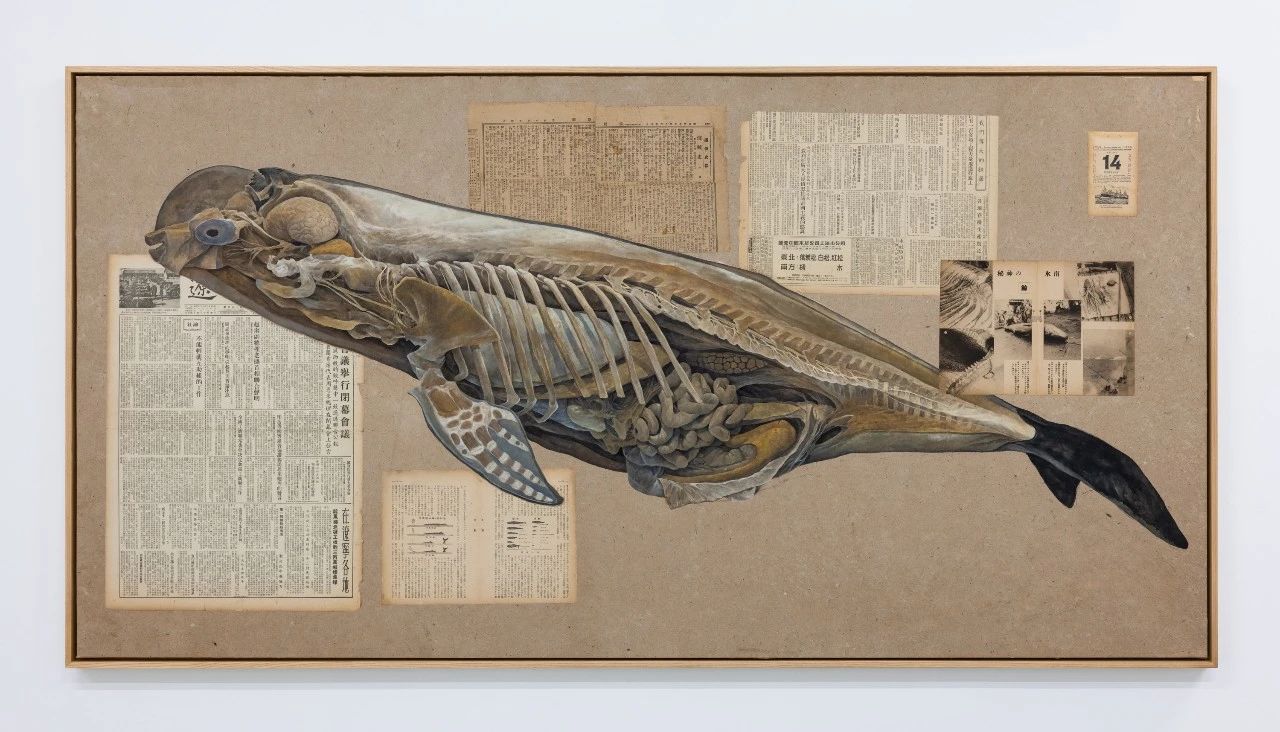

Vanguard画廊群展“混沌与不思议”正展出陈兴业、代占坤、张文智三位艺术家的潜心创作。近期我们将一一介绍他们的艺术实践与创作,本期重点介绍艺术家张文智的相关作品。展览将持续至3月9日,欢迎大家前来观展。
The exhibition “An Unlikely Menagerie And The Resulting Chaos” at Vanguard Gallery presents a curated selection of artworks by Chen Xingye, Dai Zhankun and Zhang Wenzhi. In the upcoming series of features, in addition to this post spotlighting Zhang Wenzhi's work, Vanguard Gallery will delve into individual art practice and creations of each participating artist. The exhibition will be on view until March 9, we warmly welcome you to visit before the show ends.
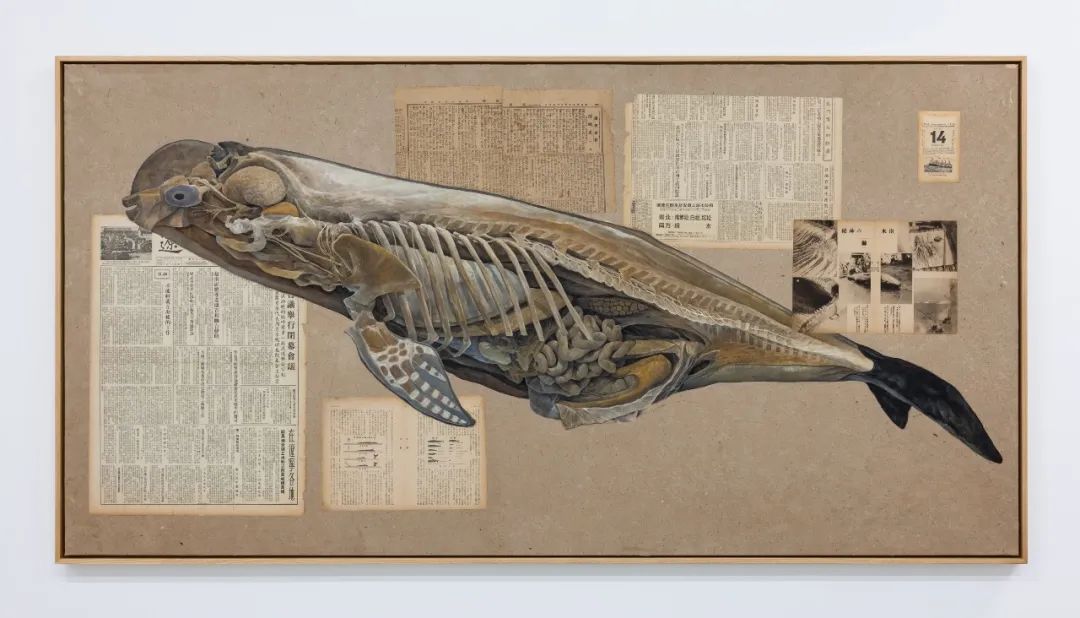
《江豚》
Yangtze Finless Porpoise
纸本设色、历史文献
Ink and color on rice paper, historical archives
90 x 175 cm|2023
张文智
Zhang Wenzhi
张文智的作品设想为现实世界重新引入绝对理性以外的可能性,他的参照系统来自古典智识、征喻、文学意象等。他的画面是似乎是中国金石学与西方珍奇柜的耦合,为地缘政治和历史遗产再度赋予象征主义的光晕。张文智的创作在当下重新想象东亚世界的近现代岔路,向屡经著录的历史和不倒的纪念碑发起质疑,在无尽的幻想中将其解构和颠覆。
Zhang Wenzhi envisions introducing possibilities outside absolute rationality back into the real world. His reference system draws from classical knowledge, metaphors, literary imagery, and beyond. His images appear to couple Chinese epigraphy with Western cabinets of curiosities, reinstating the symbolic aura of geopolitical and historical heritage. Zhang Wenzhi's creations reimagine the pre-modern crossroads of the East Asian history, questioning recorded history and unyielding monuments, deconstructing and subverting them within endless fantasies.
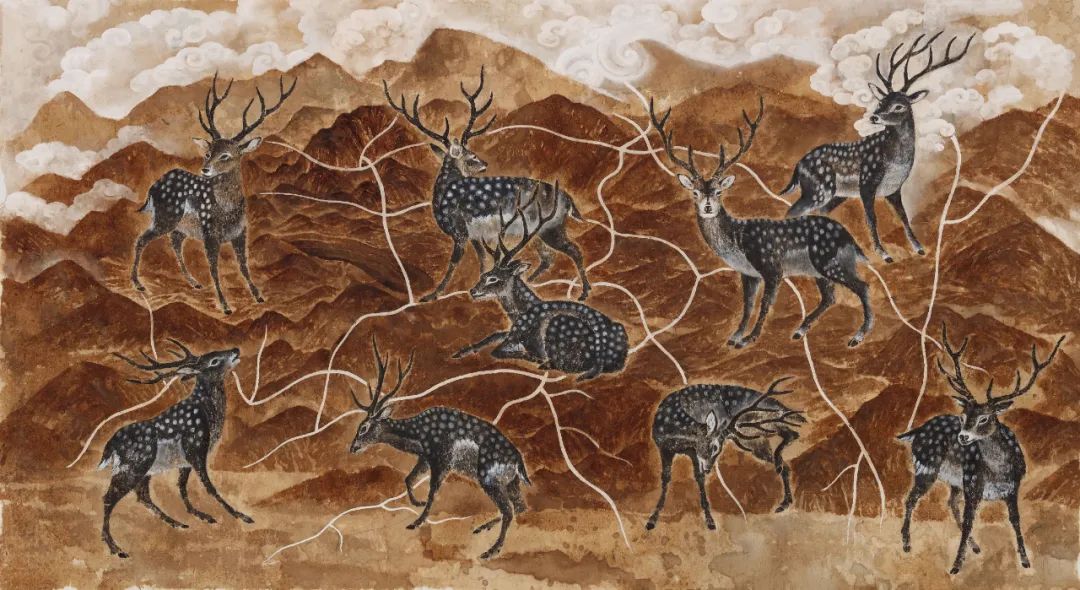
《鹿神歌》
Song of the Deer Gods
纸本综合材料
Mixed media on rice paper
49.5 x 90 cm|2020
张文智将亚洲神话故事、东北亚近代历史的研究作为创作基底。并将所收集相关文献资料与东北亚原生动植物标本融入至创作之中,以水墨为媒介想象了一个由野生动物、药用植物、萨满和历史人物组成的奇幻世界。
His practice is primarily based on his search of Asian mythology and the modern history of Northeast Asia. Zhang Wenzhi also collects the archival materials and specimens of native animals and plants in Northeast Asia, which is also an integral part of his creative process and final work.
![]()
《鹿神歌》(长卷)
Song of the Deer Gods
纸本设色
Ink and color on rice paper
23 x 720 cm|2022
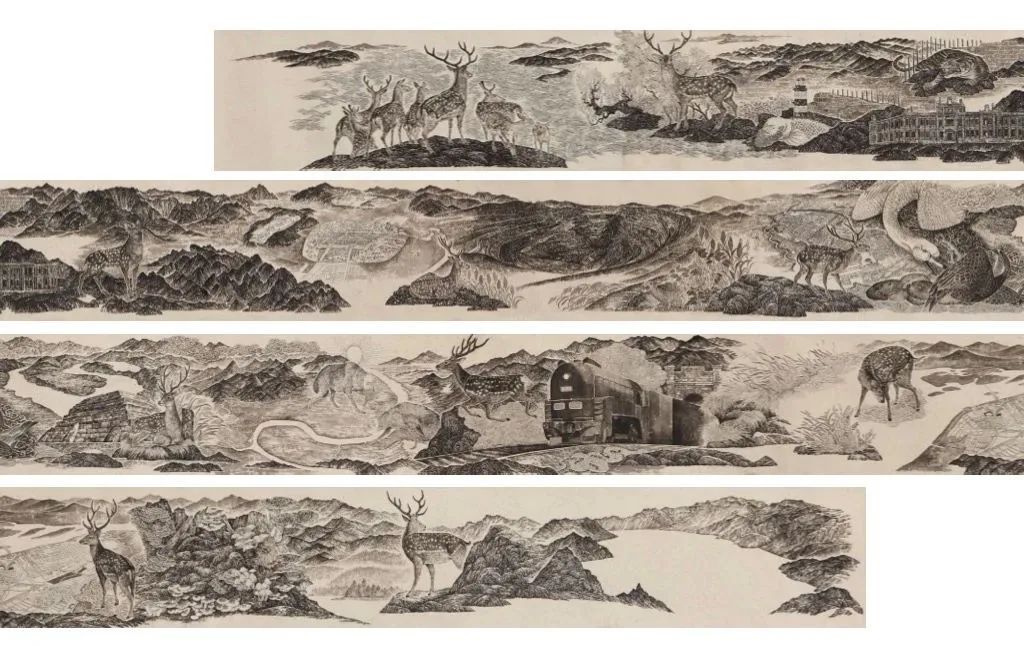
细节图

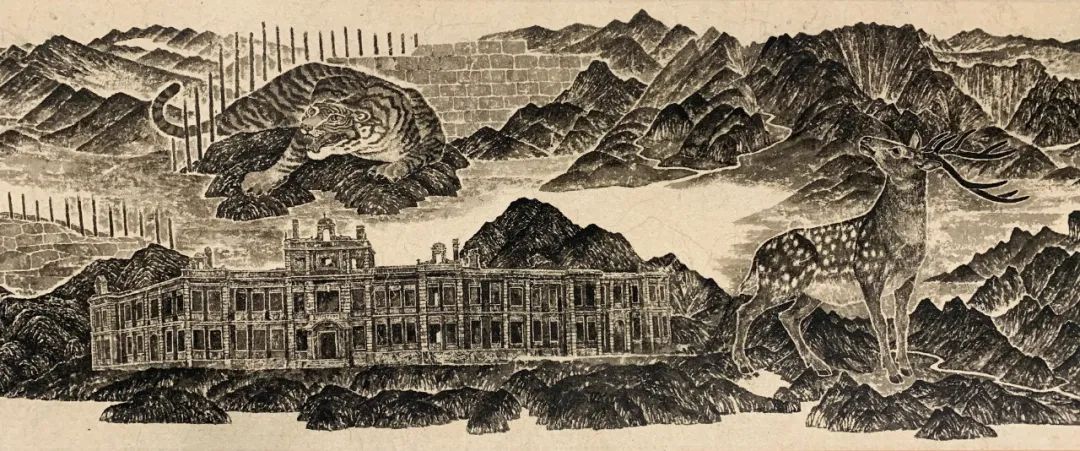
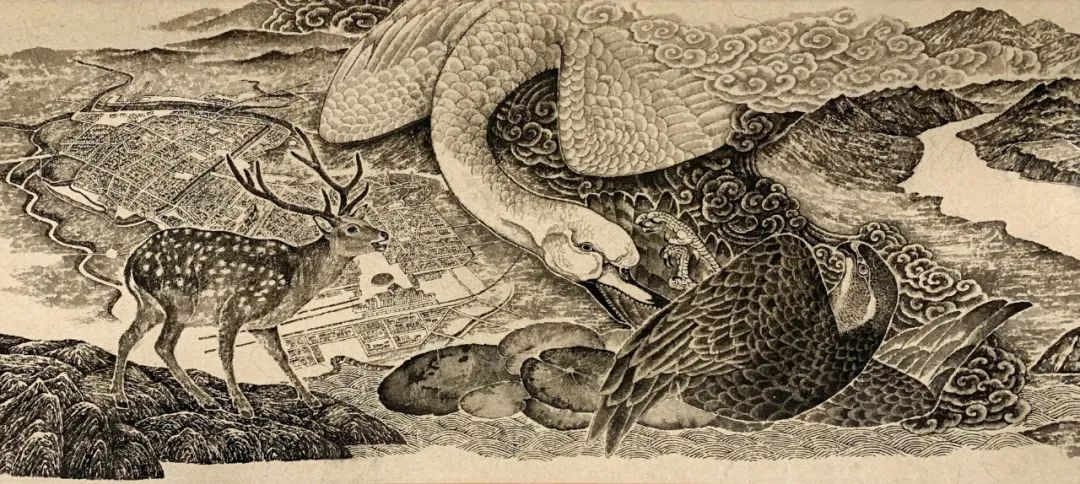
《鹿神歌》局部
|
|
“我生长在大连,一个在近现代历史上先后经受过俄国和日本殖民的城市。东北富饶的自然资源是帝国主义在此扩张、掠夺的重要目的之一,而日后东北的种种兴盛和衰落也与资源的开采和枯竭有着很大关系。《鹿神歌》是我结合东北历史、神话传说和地缘政治创作的综合性项目。我想象了一个东北亚鹿神作为沟通人、自然与历史的灵媒。在神鼓声中,鹿神从长白山起身,它一边沿着曾经的“中东铁路”穿梭于东北亚错杂的时空,一边吟唱着诉说东北百年变迁的神调。《鹿神歌》不仅仅是基于历史的钩沉,也是我对于资源榨取性开发的反思。” |
|
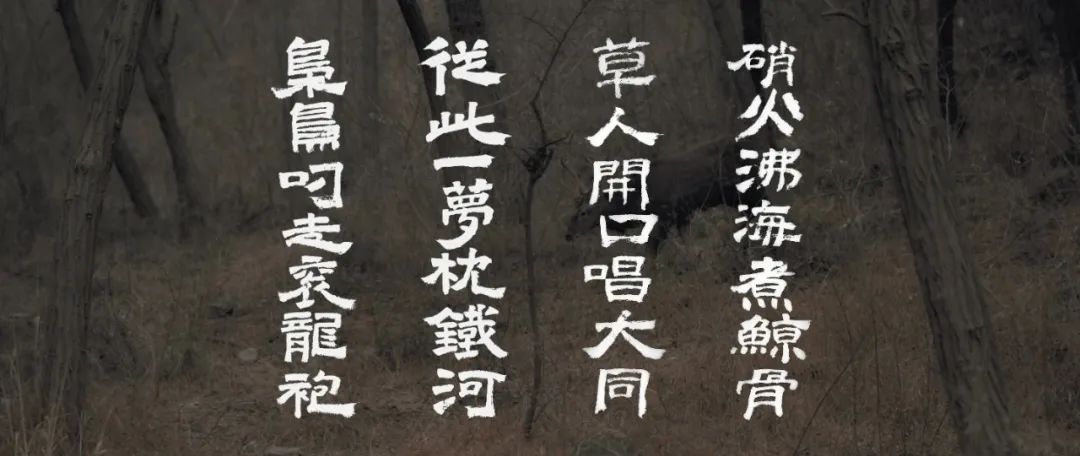
《乌斯珠耶》
Ballad of the Deer God
单频道视频
Single-channel video
12分55秒|2021
|
|
“我曾在大连自然博物馆见到过一件用稻草填充的梅花鹿标本。博物馆的管理人员告诉我,这件标本的制作人是一名20世纪早期流浪于东北民间的赫哲族萨满,汉语名字叫做傅江升。傅江升的特殊身份让我对他产生了兴趣。后来我在位于大连鲁迅路的图书馆查阅满铁资料时找到了日本民族志学者对于傅江升的记载。傅江升世居黑龙江省同江县街津口,出身于一个富裕的渔户家族,1910年左右因匪乱迁往哈尔滨。自称曾因看到亚细亚号列车驶进哈尔滨火车站受到了惊吓,高烧了七天后接神,之后便开始乘坐列车游历东北。传闻里傅江升会在旅途中四处唱诵自己创作的神歌。当他遇到的动物尸体便上前祷告,之后将毛皮剥下,填充稻草制作成标本。他曾在抚顺西露天矿的矿坑前敲鼓吟唱了三天,歌声结束时,苍鹰在矿坑上空成群盘旋。1937年左右,傅江升在大连西公园的虎笼前放置了一只梅花鹿的标本,并在笼子前唱起了有关鹿神乌斯珠耶的歌谣,唱罢便乘船离开了大连,不知去向。这只梅花鹿的标本几经周折,现藏于大连自然博物馆,就是我见到的这件。傅江升所创作的《乌斯珠耶》神歌也流传到了东北民间。”
I once saw a sika deer stuffed with rice straw in the collection of the Dalian Natural History Museum. The curator told me it was made by a shaman called Fu Jiangsheng who roamed the Northeast in the early twentieth century, and I was immediately intrigued by Fu’s unusual identity.
When I was researching the South Manchuria Railway Company at the library on Lu Xun Road in Dalian, I found mention of Fu in records left behind by Japanese ethnographers. The Fu family were wealthy fishermen in Jiejinkou in Tongjiang County, Heilongjiang Province; their move to Harbin around 1910 was prompted by harassment from local bandits.
According to Fu himself, his connection with the deities came after suffering seven days of high fever brought on by the shock and fright he experienced at seeing the Asia Express pull into Harbin Station. Despite the initial fear, he later traveled across the Northeast by train.
Legend has it that Fu would perform his own songs to the gods on his wanderings, and when he came upon the remains of an animal, he would go up, say a prayer, then strip the pelt and stuff it with rice straw to make a taxidermy specimen. He also once beat a drum and sang for three days at the West Open Pit in Fushun. When he was done, a flock of northern goshawks circled over the coal mine.
Around 1937, Fu placed a stuffed sika deer before the tiger cage in Dalian’s West Park and sang a ballad about Wusizhuye, the deer god. Upon finishing he took the ferry and left Dalian, never to be seen again. The deer, after a journey of its own, ended up at the Dalian Natural History Museum—it was the very one that had caught my eye. The ode Fu wrote to Wusizhuye is preserved by the people of the Northeast to this day. |
|
早期作品 EARLIER WORKS
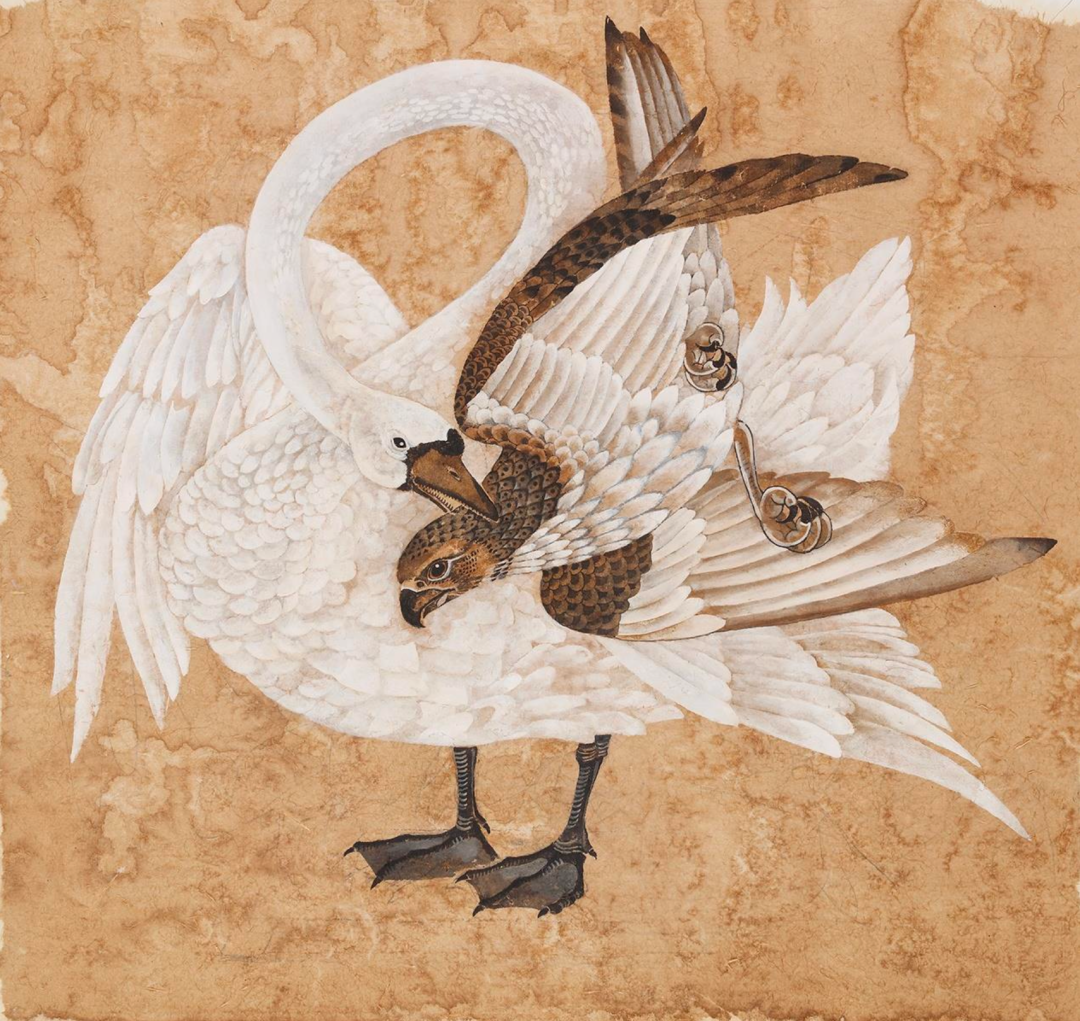
《大鹅咬了海东青》
The Goose Bites the Falcon
纸本综合材料
Mixed media on rice paper
63 x 65 cm|2020
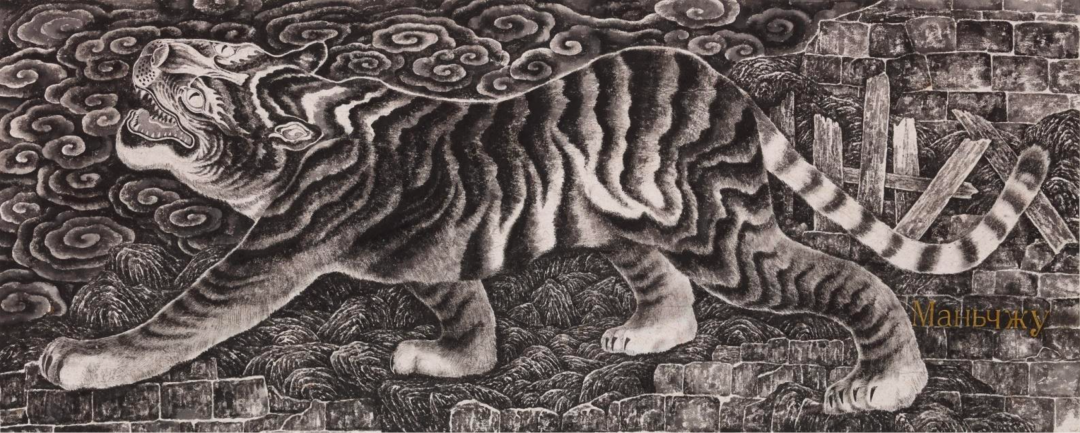
《满洲虎》
Manchurian Tiger
纸本设色
Ink and color on rice paper
65 x 156.5 cm|2020
|
|
达里尼的西公园内曾圈养了一只来自西伯利亚的东北虎,因此这座公园也被叫做虎公园。当他还生活在野外的时候,这只老虎游走在俄罗斯与中国的交界之处。野生动物在边境上的迁徙活动就像是橡皮在铅笔绘制的地图上游走,一时模糊掉了边境的概念。当他们模糊到只剩下地图上的一个凹凸的变化后,所显现出的混沌一团似乎就是东北亚的本来面貌。
A Siberian tiger from Siberia was once kept in Dalyn's West Park. Thus, this park is also called Tiger Park. When he was still living in the wild, this tiger wandered around the border between Russia and China. The migration of wild animals is like an eraser traveling on a pencil-drawn map, blurring the concept of the national border. When they became too blurred on the map, the chaos that appeared seemed to be the natural state of Northeast Asia. |
|

《黑龙引》
The Journal of The Black Dragon
纸本水墨、柚木屏风
Ink on rice paper mounted on linen, teak wood screen
H 182 x 72 x 3 cm x 6 pcs
2019
|
《黑龙引》以关东州的历史作为出发点,将现实的历史巧合用虚妄的想象连接起来。天皇的肖像,奇怪的巨鱼头骨,变成老虎的鲨鱼,零碎的的信息被连接起来变成了一组奇幻的关东州的史诗。
Using the history of the Kwantung Leased Territory as a background (actual historical events) the artist adds on his vivid imagination to thread the narrative. A portrait of the Japanese emperor, an enormous fish head skull, and a shark morphed into a tiger… bits and pieces of information being linked together develop into a fantastical epic about this former colonial territory. |
|
展览现场 INSTALLATION VIEW
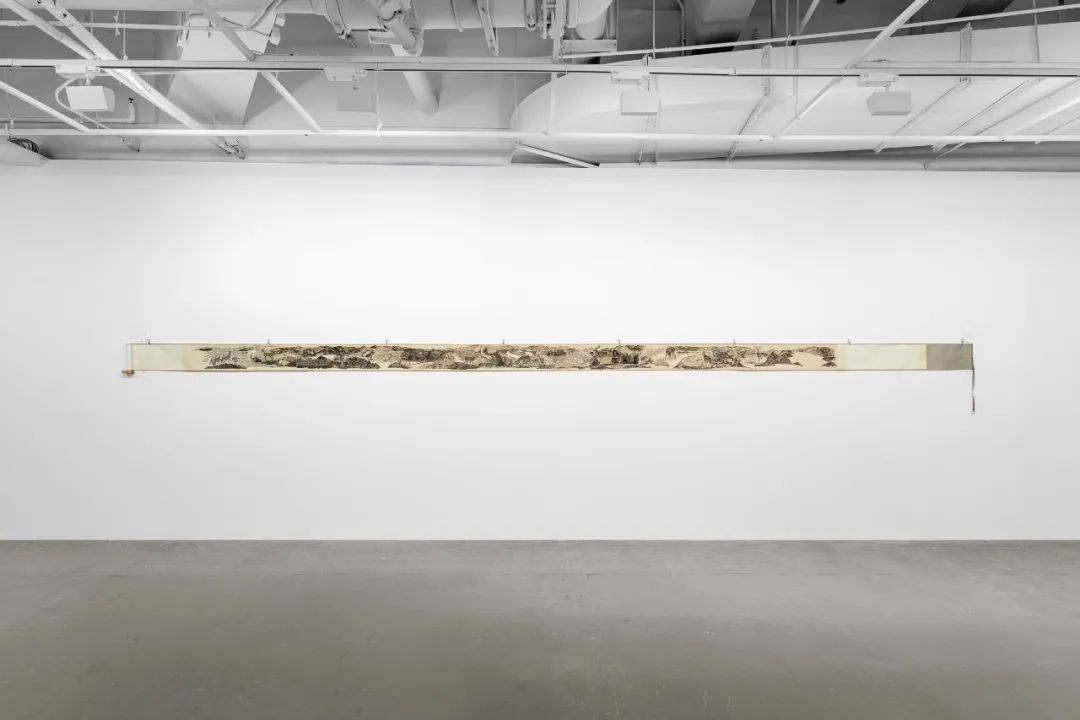
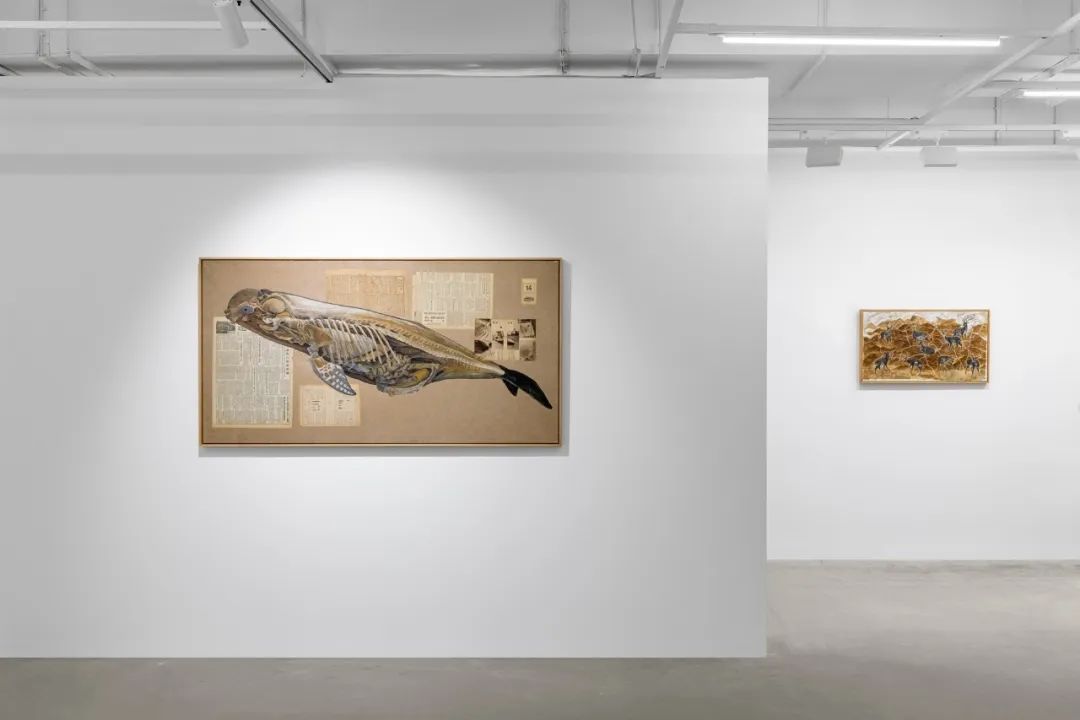
©文章版权归属原创作者,如有侵权请后台联系删除
